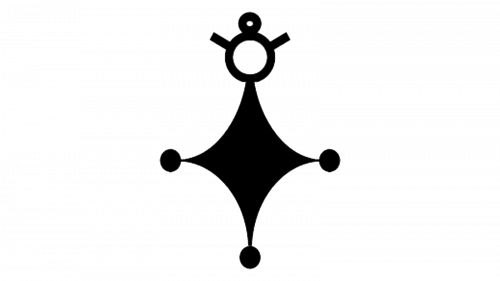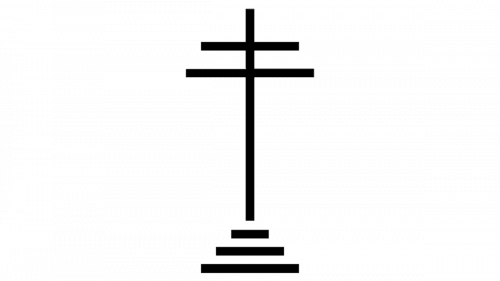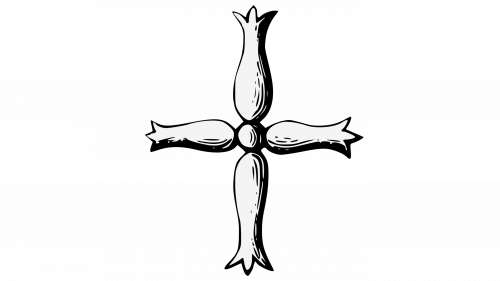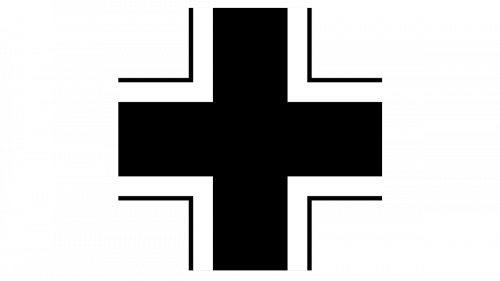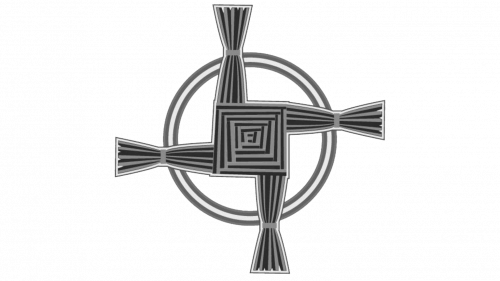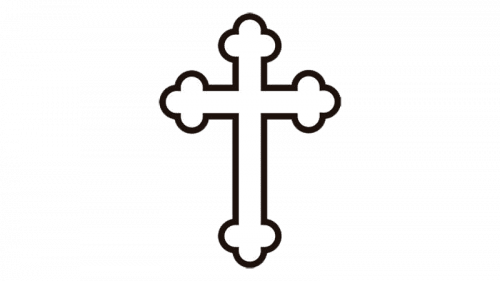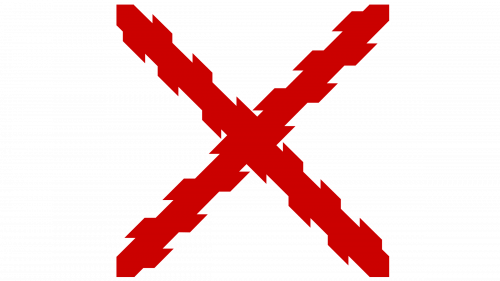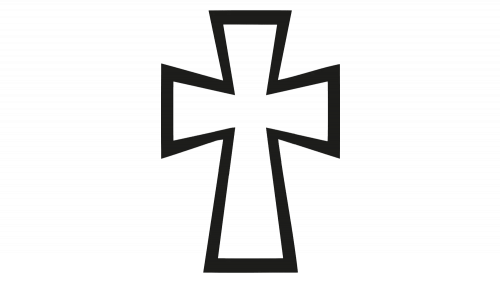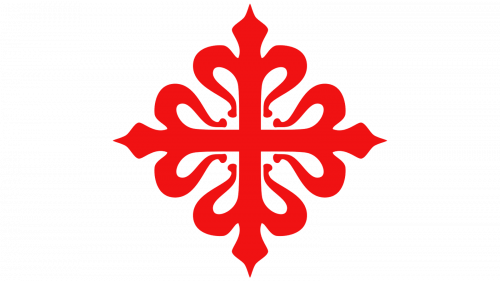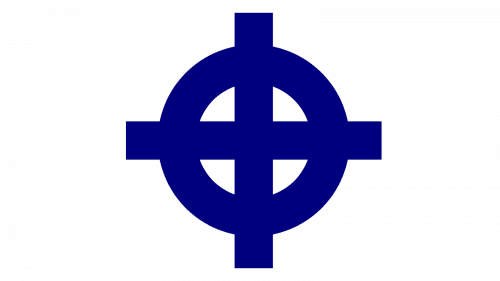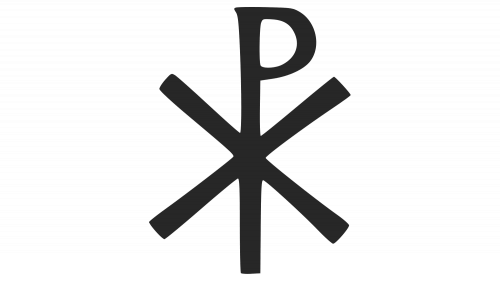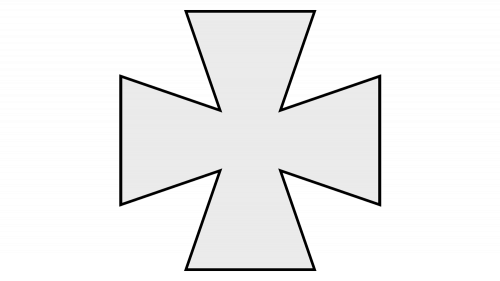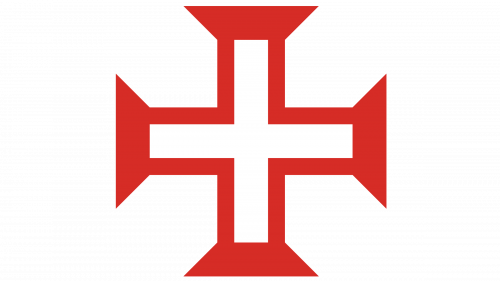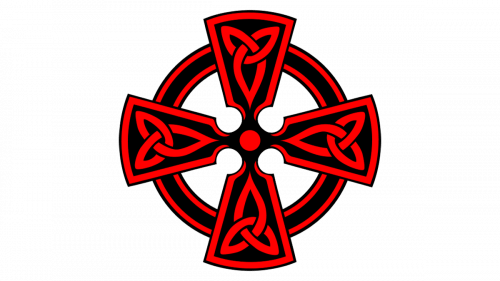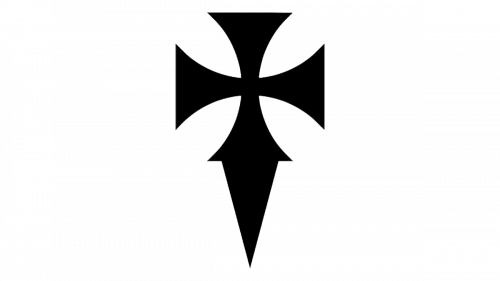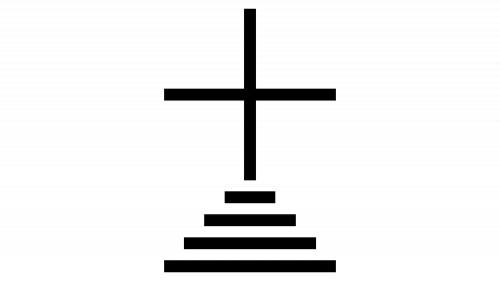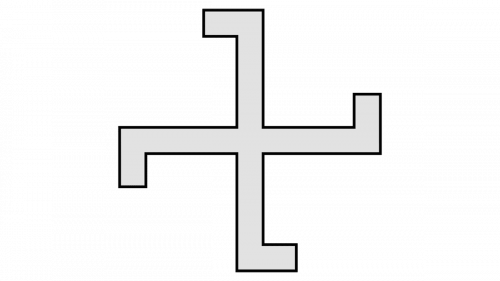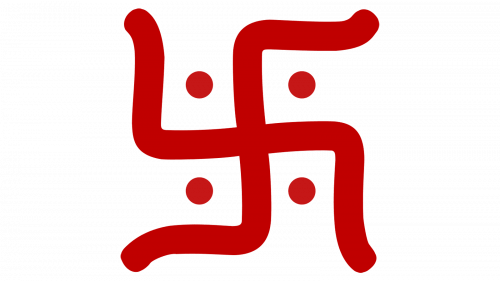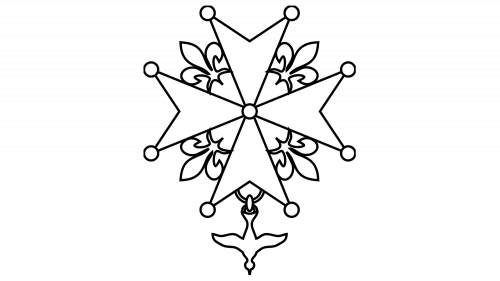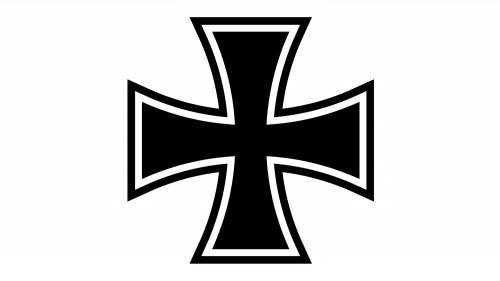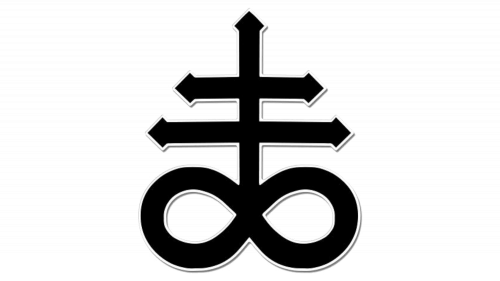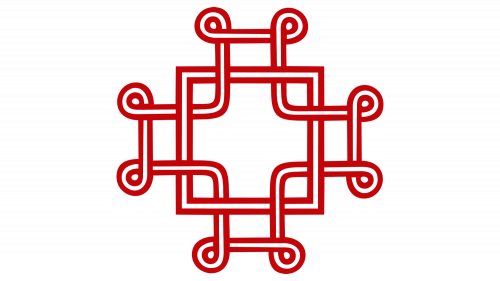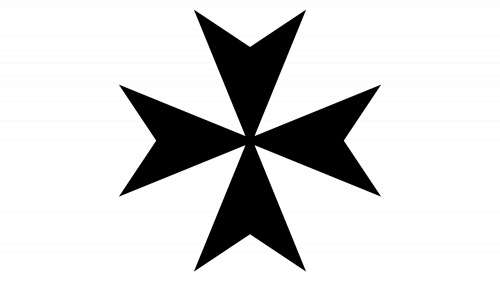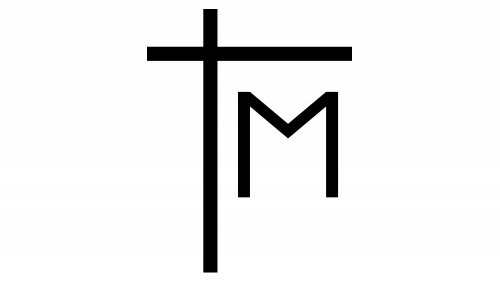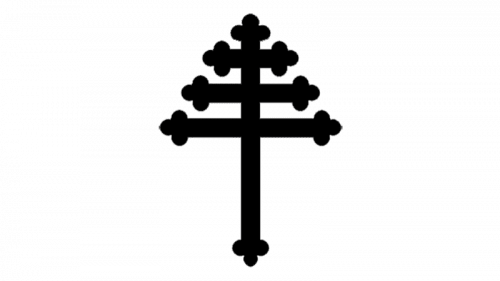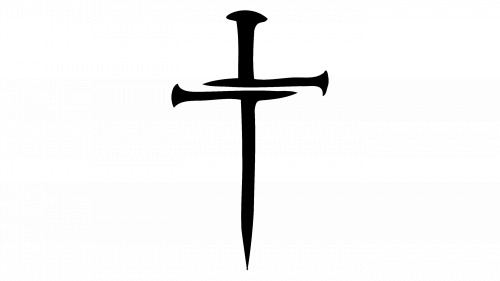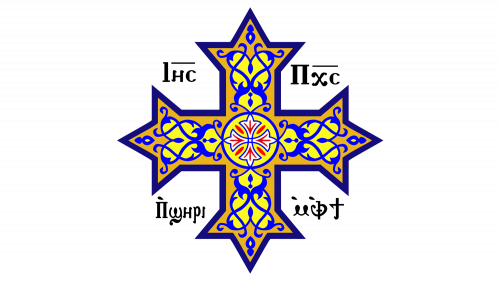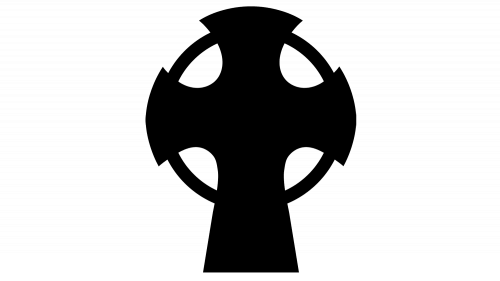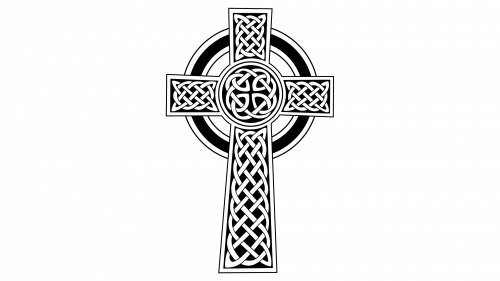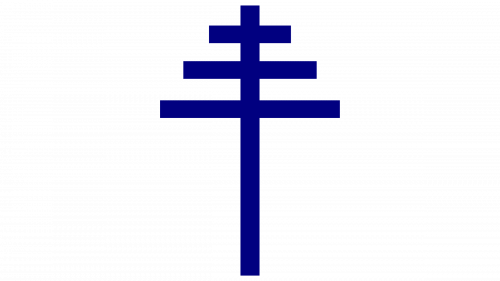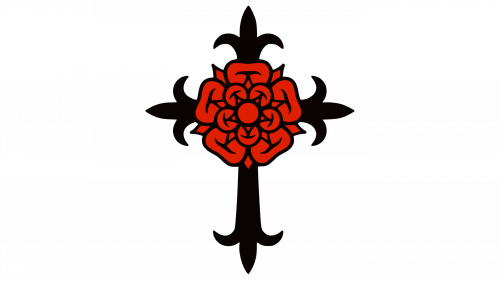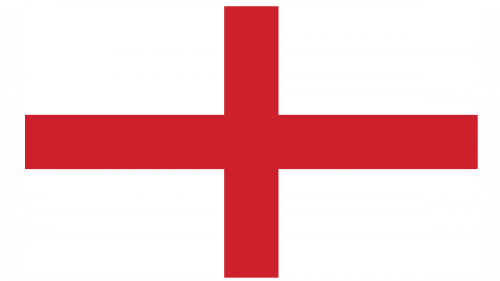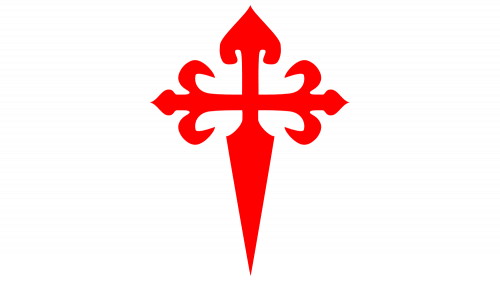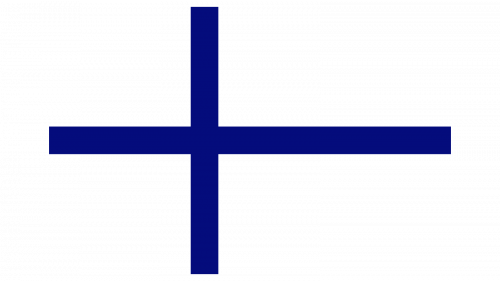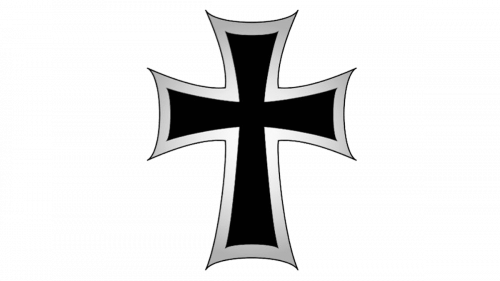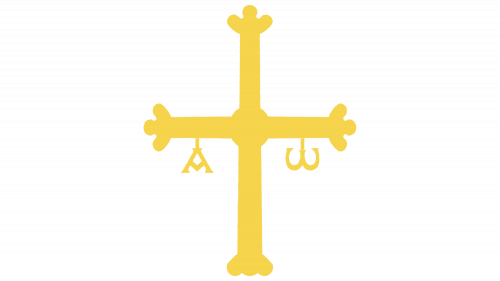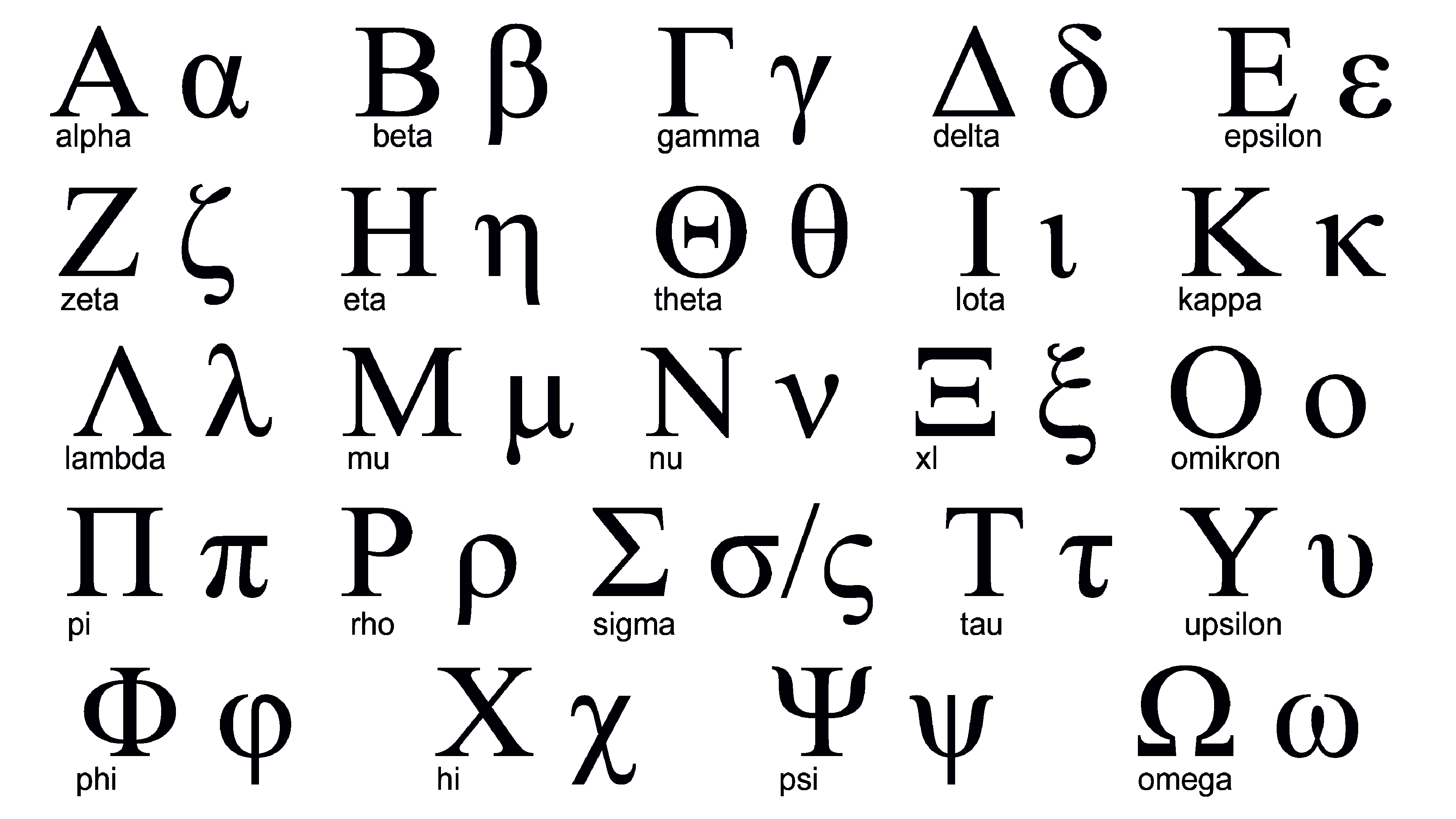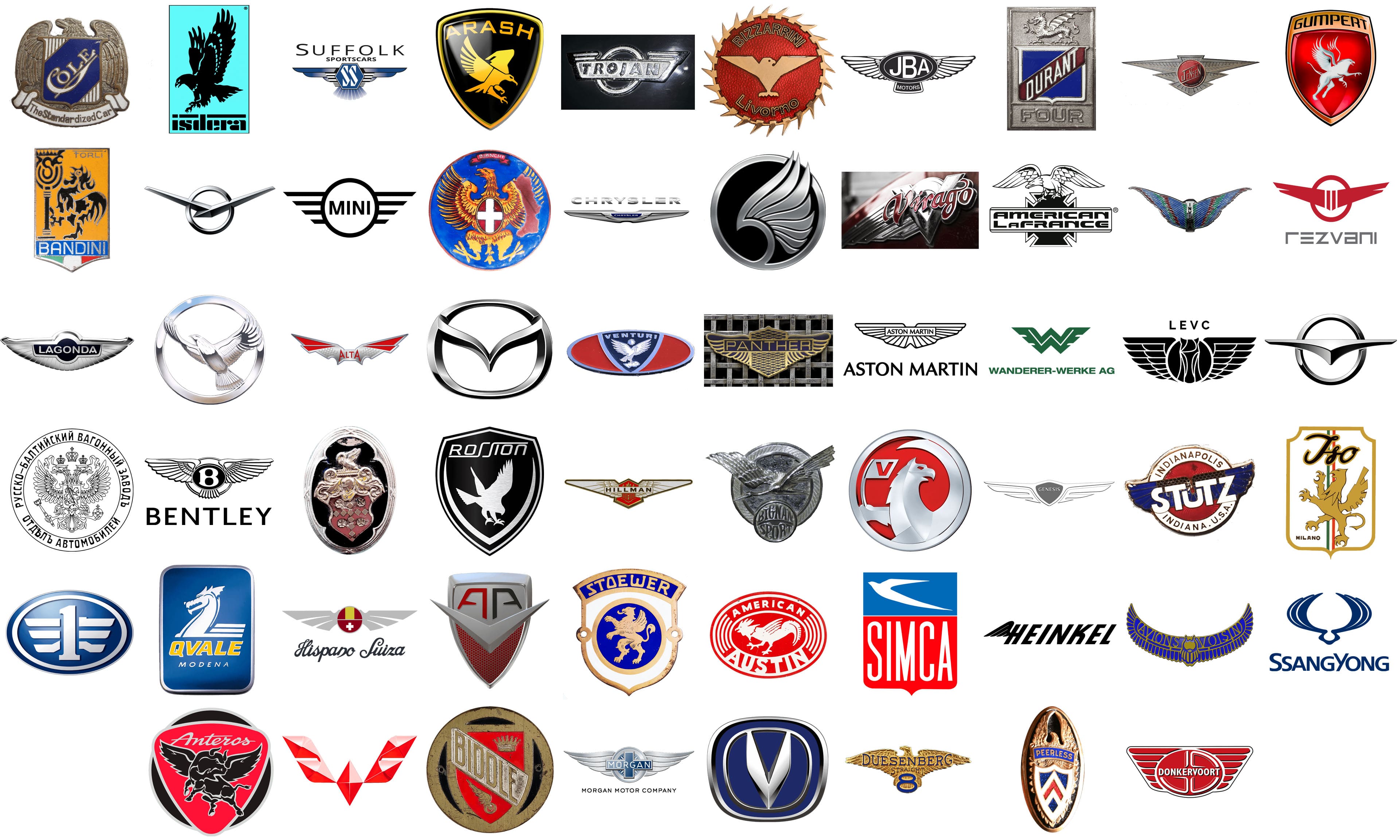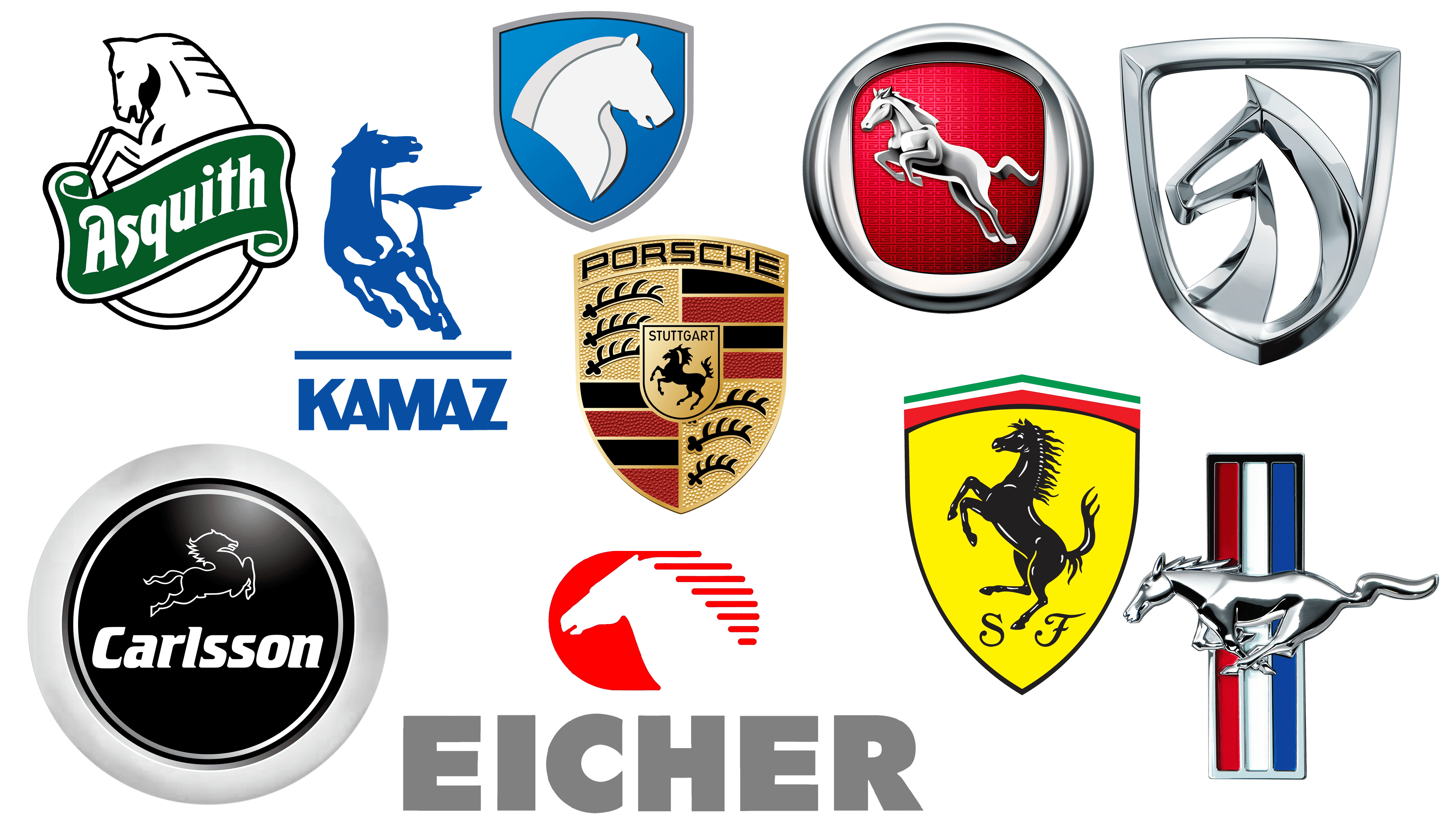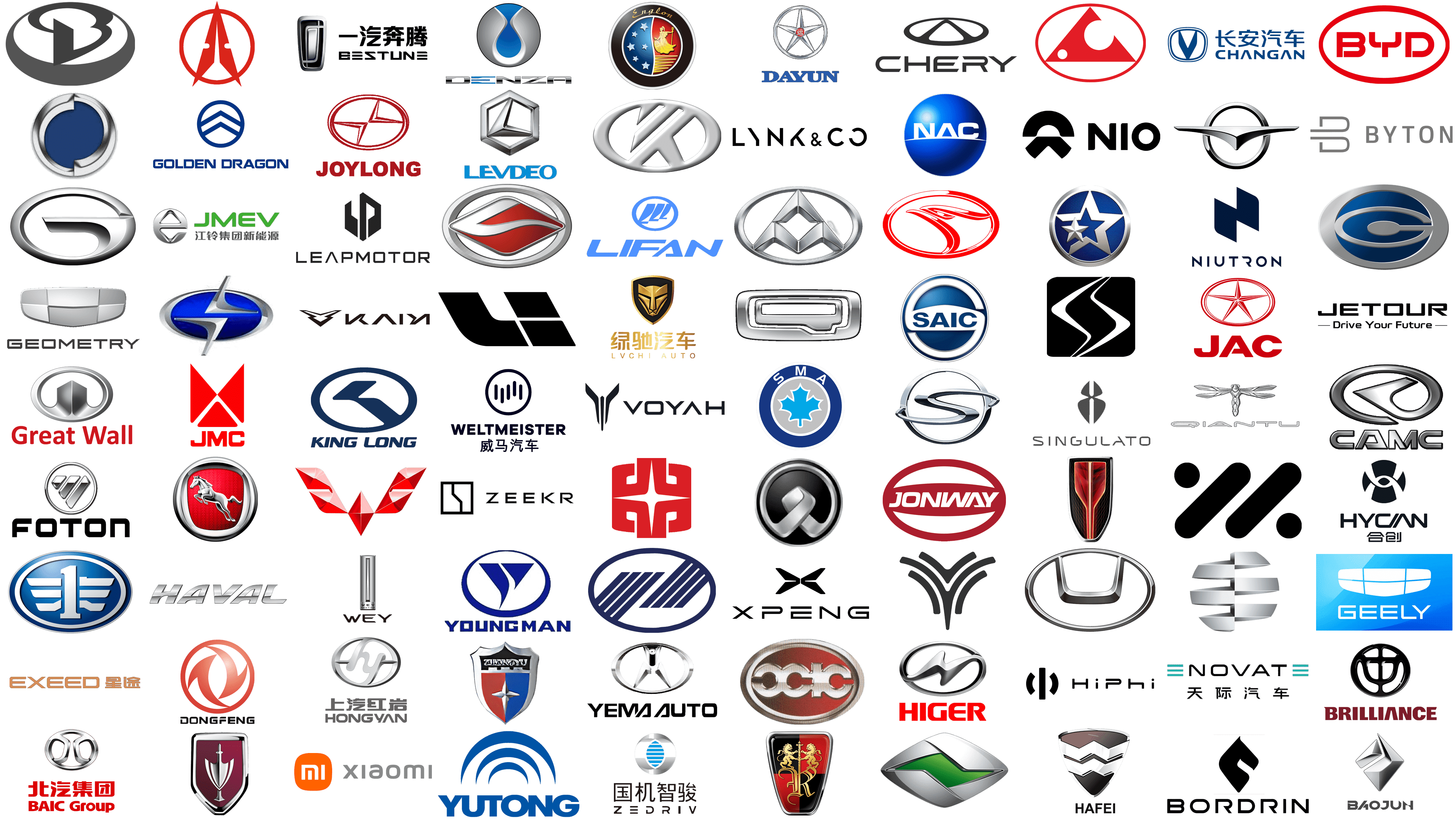Discover Different Kinds of Cross Symbols – Your Comprehensive Guide
Being an ancient symbol, the cross is an execution tool and, at the same time, a symbol of salvation. Initially, it was a universal symbol of the space: two crossed lines of the cross denoted the four cardinal directions. It was also linked to union and connection. In this capacity, it has been preserved to this day in mathematics (plus sign). The image of a cross on various objects discovered during archaeological excavations is typical for many peoples of Asia, Africa, Egypt, the East, and Europe.
The meaning of the cross varies among different people. In Western Asia, the cross was a sacred sign and symbol of happiness; in Babylon – the sign of the four phases of the moon; in Syria – a symbol of the four main elements of the universe; in pre-Columbian America, it was associated with life and fertility, and in Arcadia, it was the opposite, a sign of death, depicted on graves. In China, a cross placed inside a square is a symbol of earth and stability. In Africa, this is a powerful sign of patronage and protection, cosmic unity, and inscribed in a circle is a symbol of supreme power.
With the emergence of Christianity, the cross received a completely new meaning – gradually it became the main symbol of this religion. It represents the cross that Jesus was crucified upon and had his hands and feet nailed to for Christians. It denotes eternal life and deliverance from suffering.
Agadez Cross
The Tuaregs are mainly nomads, and accordingly, their magical protection is mainly against desert spirits who can blur their tracks, send a storm, etc. The most famous Tuareg amulet is the so-called “Tuareg cross” or “Agadez cross”. Of course, it’s difficult to call it a “cross,” but Europeans are used to it. The Tuaregs themselves call it “teneheld.” Most often, these amulets are called Agadez crosses, named after the city of Agadez, where Europeans first encountered this stunning jewelry. Tuareg craftsmen keep the composition of the alloy a secret, claiming that it is the inheritance of their distant ancestors from a mysterious Atlantic island. The alloy is close to modern cupronickel, nickel silver, and brass, but it is neither of these.
Albanian Udi Cross
The Albanian Udi Cross represents the Albanian-Udi Christians in Azerbaijan. The cross without a crucifix has pre-Christian roots: the Tree of Life was depicted in a similar way in Mesopotamia and the Near East. Crosses without crucifixes with plant elements are also used in the Armenian and Assyrian churches. Its meaning goes back to the Neolithic era. In Dagestan, crosses are also found in Muslim villages; they are made into baked goods and used in various rituals, as this is a very ancient tradition. One of the oldest Christian churches is the Udi Church, which is an integral part of the Albanian Church.
Anchor Cross
Among the many varieties, there are the so-called anchor or mariner’s crosses. Its protrusions at the base, which resemble an anchor’s hook, set it apart from other crosses. Anchor is a sign of Christian hope. Just as in a storm at sea an anchor serves as the support of a ship, so in life Christian hope is the support of the soul. It combines the cross of Christ and a crescent – a symbol of the birth of Christ from the body of Mary, whose emblem is the crescent.
Ankh Cross
This is a cross with a loop, which was found on the trinkets of Egyptian pharaohs. The Egyptians considered this symbol a key to the afterlife. If you take into account that the afterlife was of crucial importance for Egypt and that a large part of the life of an Egyptian pharaoh was subordinated to preparation for death, then one can imagine its significance in Ancient Egypt. It contained the idea of immortality, connecting two signs: the cross represents life, and the circle stands for eternity. The Ankh also symbolized the union of Isis and Osiris, earth and sky, the unification of the male and female beginning, and wisdom.
Anuradhapura Cross
One of Sri Lanka’s former capitals, Anuradhapura, is where the Anuradhapura or Nestorian Cross was originally found in 1912. Nestorian Christianity spread to Central Asia around the 7th century AD and slowly expanded throughout the countries there over several hundred years. The cross occupied such an important place in Nestorian faith and life that the Mongol period in the history of Nestorian monasteries was known as the “monasteries of the cross.” The Nestorians revered the cross, not the crucifixion.
Archangel Cross
The word “archangel” comes from a Greek word meaning “supreme angel.” It describes an angel who is the leader of other angels. Each of the archangels has a specific role and task on Earth as they serve under God’s direction as mediators between humans and God. They also take an active part in people’s lives. Since ancient times, Christians have connected the Archangel cross with leaning onto an angel for assistance in prayer during long and challenging travels, as well as during times of hardship and disaster. The cross features two straight horizontal bars of different lengths at the top and three horizontal lines or “steps” at the bottom.
Armenian Cross
The cross as an icon of eternity and life existed among the Armenians long before the Christian teachings. The Armenian Christian version of the cross absorbed some elements from its predecessor. Armenians imagined not the crucified Christ on the cross, but His allegory – grapes, which, as if the blood of Jesus, bestows eternal life. You can also notice subtle floral patterns and ornaments. The Armenian cross is also distinguished by its unique four wide forked ends – the so-called swallowtails. This is a sign of the eternal continuation of life in the universe. In the center of the Armenian cross, you can sometimes see the Armenian letter ‘Eh’ (Է) meaning “God”.
Avellane Cross
The Cross avellane was compared to the filberts or hazelnuts (avellana in Latin). Although there are no historical examples of its usage in weapons, society has embraced its use. The three points on the arms represent the Trinity in this heraldic sign from the eighteenth century. This form is also known by its heraldic name, the Cross Cercelée (or Cercely), because of its round ends; alternatively, it might be called the Cross Recercelée since the ends curve back on themselves.
Balkenkreuz Cross
The Balkenkreuz cross is the identification mark of the Wehrmacht and its various units during World War II. It was on German armored vehicles from World War II. It appeared long before the war when there were no traces of Nazis on German soil. It appeared in 1813 in Prussia (when Germany as a country did not exist). It was used as a reward for the liberation of the state from Napoleon. In fact, Balkenkreuz is another stylization of the beam Teutonic iron cross and the cross of St. Nicholas.
Basque Cross
The Lauburu, an ancient emblem of the Basques that stands for their identity, togetherness, and culture, is also referred to as the “Basque Cross”. It is also closely linked to the Celts and is seen as a symbol of prosperity. Around 200 BC, the Basque Country of Spain adopted the Lauburu emblem. Its symbol is comparable to a motorboat propeller, yet it predates boat motors. Many claim that the heads symbolize the four Basque Country regions. The cross does not appear in any of the country’s coats of arms but it does not take away from its importance.
Bolnisi Cross
The Bolnisi Cross is a cross drawn from segments of a circle with flared arms. Quite often crosses were placed in circles. The sign of the Bolnisi cross has its own interpretation – it is harmony in the interaction of energies, natural elements, human will, and higher powers. The human is in the center, while the top is personified with the divine order, the bottom is with human choice and wisdom, left and right are with the energy of love radiated by man into the universe and the eternal movement of life given from God. Thus, the Bolnisi cross symbolizes awareness. Today, four such crosses are depicted on the flag of Georgia. The ornament has been widely used in Georgia since the 5th century and decorates the first Georgian basilica.
Brigid’s Cross
The Cross of St. Brigid is one of the most ancient Irish symbols, bearing solar symbolism. It is made from straw or reed stalks. The center is woven like a square, and the tails of the straw are left in the form of rays. The symbol, as the name suggests, is associated with Saint Brigid, who is considered one of the patron saints of Ireland. According to legend, the first such cross was woven from reeds by Brigid herself. It is interesting that before that a cross of a similar shape was considered a pagan sign of the sun, but thanks to her, it represents peace and goodness. This symbol is usually created by students at school during craft projects and you will see it hanging on the wall of the home of many traditional families in Ireland.
Budded Cross
Budded or Botonee cross has semicircular ends in the form of leaves, sometimes knobs, but otherwise looks like a typical cross. This form of cross is most often found in Orthodoxy. This Budded cross, symbolizing the Trinity, is used to symbolize the Resurrection of Christ, the triumph of the Lord over death. It is also the main altar cross in Orthodoxy. In heraldry, it can be seen on many coats of arms. Initially believed to have its roots in Gothic architecture, it has found widespread use in Christian art and decorative elements of a church.
Burgundy Cross
The Burgundian cross is a St. Andrew’s cross, usually red on a white background, with branches bristling with the remains of felled branches. It is often also called a branchy or lily oblique cross. This sign was directly associated in ancient times with Spain. It would seem that Burgundy, as an ancient state, is quite far from the Pyrenees and the Spaniards should have nothing to do with it. However, in 1526, the French king Francis I ceded Burgundy to the Holy Roman Emperor Charles V. This extraordinary man, who was a distant descendant of the last of the great Burgundian dukes, Charles the Bold, was also the king of Spain. Through him, this symbol began to spread throughout the Pyrenees. The Burgundian cross on a white background was chosen as the banner of their territory in “New Spain” in Central and North America.
Byzantine Cross
The Byzantine cross has been considered Christian for many centuries. In fact, one can find rather antique versions of this cross with some variations. It originated in the 6th Byzantine Empire and is characterized by three horizontal bars. The ends of the bars flare out, setting it apart from a typical cross version. In addition, the horizontal bar is positioned in such a way that the top, left, and right ends are of the same length, which gives it a rather unique appearance.
Calatrava Cross
One of the oldest Iberian military-spiritual Orders is the Spanish Order of Calatrava. It takes its name from the Calatrava fortress (Arabic: Qala’at Rava’a), located in Andalusia, and granted to the Order of the Temple in 1147. The Order of Calatrava was founded in 1157 AD in Spain to defend Calatrava from the advancing Moors. The sign of belonging to the Order of Calatrava-Salvatierra was initially a symmetrical (equilateral) openwork red cross on a white field, with ends in the form of lilies and later a red cross with ends decorated with stylized Latin capital letters “M” (the initial letters of Virgin Mary).
Calvary Cross
The Cross of Calvary is the main symbol of Christians around the world. The richness of its design in most works of church art indicates historical authenticity and symbolizes the respectful attitude of believers towards it that has developed in the Christian church. This is a Latin cross, at the foot of which the three main Christian virtues are depicted in the form of a ladder: Faith (at the top), Hope, and Charity. It is considered one of the most laconic crosses, since it consists of two intersecting crossbars, without a crucifix. There is also an Orthodox version of this cross, which has more complex symbolism.
Camargue Сross
When a Parisian illustrator Hermann Paul visited the manada of the Marquis de Baronselli, the marquis invited his friend to draw an emblem that would simultaneously symbolize the village of Sainte-Marie-de-la-mer and the Camargue, places they both loved. The bottom of the emblem has an anchor, which symbolizes the boat on which the Saints of Mary sailed to the Camargue, as well as fishermen and hope. The trident is an indispensable tool in the work of the Guardians and a symbol of the Holy Trinity, and, accordingly, faith. The third element was the heart, symbolizing love and mercy for one’s neighbor. Thus, the three Christian virtues – Faith, Hope, and Love – became three symbols of the Camargue cross. The crossbar with tridents crowning it on both sides appeared thanks to another person – a simple village blacksmith.
Cantabrian Cross
The Cantabrian cross can also be viewed as a forked St. Andrew’s cross with pommels at the ends of the crossbars. Such a cross is also called Lábaro. This is a modern interpretation of the ancient military symbol of the Cantabrian tribe, a pre-Roman tribe that inhabited Cantabria. According to some politicians and public figures, this symbol should become the official flag of Cantabria. An unofficial flag has also been popular in Cantabria since 2006: it is a purple canvas with a yellow Cantabrian cross.
Carolingian Cross
This is a cross consisting of four identical arms. It is more complex than the Celtic Cross or Brighid’s Cross but very similar to them. The name of the cross originates from the French Carolingian Dynasty. In medieval Europe, it was taken up by the Christian church and transformed into a Christian cross. In modern popular culture, the triquetra symbol that forms the cross indicates Norse or Celtic paganism. The cross signifies things such as the eternity of God, balance, and unity in Celtic culture.
Celtic Cross
This is a characteristic symbol of Celtic Christianity, although it has more ancient pagan roots. For the first time, designs resembling a Celtic cross appeared among the ancient Irish around the 12th century AD. This Irish cross is similar to the Latin cross with a circle around the center. The image symbolizes energy and light as well as eternal life. The circle symbolizes the infinity of development, unity, and the union of forces. It has a very strong connection to Ireland and you can find many giant crosses of this shape enlivening the landscapes of Scotland and Ireland.
Chi Rho Cross
Although not a cross per se, the Chi-Ro, also known as the “Christ Monogram”, is one of the oldest Christograms. It consists of two initial Greek letters of Christ’s name ΧΡΙΣΤΌΣ – “Chi” and “Rho”, which are combined so that the vertical line “Rho” crosses the center of the letter “Chi”. The symbol looks less like a cross than a staurogram seen earlier. It is more reminiscent of the papal symbol. Popes do not use it by chance. It alludes to the imperial majesty of Constantine the Great. He believed that this was a way to bring God’s grace to them as they fought their enemies. Sometimes the Greek letters “alpha” and “omega” are added to it.
Coptic Ankh
Historians suggest that the Coptic Ankh was created using the Ankh as a guide. It is also known as Crux Ansata and symbolizes faith in the story of Christ’s sacrifice and resurrection. A horizontal line is a line dividing a person’s earthly and afterlife, while the loop at the top is the eternal circle of life. The cross also resembles a key that opens the door to the other world. It was often used by shamans and sorcerers to perform magical rituals, spells, and rituals.
Coptic Cross
A variation of the Coptic cross that features the nails used to hang Jesus during his crucifixion. The triumph of good over evil and light over darkness is represented by the cross. It is called the cross of life and prosperity, considered a talisman and amulet against illness and misfortune. The Coptic cross is a symbol of unity and faith in God and also recalls the suffering and sacrifice of Christ. The cross also serves as a reminder that even through suffering, strength and hope for a brighter future can be found.
Cossack Cross
The Cossack cross represents the customs and heritage of the Ukrainian people and has religious and cultural significance. The Cossack cross is a symbol of the Ukrainian knighthood and troops. The cross is the basis of the Christian’s faith; on the cross, Christ died and saved His people. This cross has since been revered as an invincible weapon against evil. The Ukrainian people, paying tribute to this tradition and understanding the importance of the cross, have been creating these crosses for various needs for almost a millennium.
Crosslet Cross
A Crosslet cross is a centered cross where each of the four main branches is equipped with an additional crossbar. It can also be viewed as a Greek cross with little crosses at the ends of each arm, or four Latin crosses placed at right angles to one another—each with the top of the small cross pointing in a different direction. Crosslet cross is also called Mission cross. The four Gospels are represented by the four little crosses at the ends. In the form of an oblique cross, it is called the cross of St. Julian.
Cross of the Order of Christ
The Order of Christ is one of the oldest knightly orders founded during the Middle Ages, which has its own rich history, symbolism, and meaning. It was established in 1318 by the Portuguese King Denis I and became the successor to another great order – the Knights Templar. The Order was created based on the lands and houses of the property of the feared Templars, for which archival evidence has been preserved. The Order of Christ became something in the middle between the classical spiritual-knightly orders of the Crusades and the Iberian, largely secular, organizations.
Decorative Celtic Cross
The Celtic Cross is seen to be a depiction of wisdom, fortitude, and sensitivity in navigating the ups and downs of life. It has undergone several redesigns. Even so, Celtic crosses feature an iconic circle occupying the center of the cross. While some historians say that the ring is a halo, others insist it is a celestial circle. No matter the different meaning interpretations, its exquisite design, richness of spirituality, and relationship to the natural world captivate a lot of people.
East Syrian Cross
The East Syriac Rite is a liturgical tradition of several Eastern Christian churches. The name “East Syriac Rite” is the most neutral of all as it helps to distinguish this tradition from the West Syrian and emphasizes its isolation from the Greek-speaking Byzantine tradition. The East Syriac liturgical tradition originated in the territories east of the Euphrates River that were not part of the Roman Empire. They use an East Syrian cross that resembles a Latin cross only with forked ends that have a “V” shape. Its simple design does not take away from the deep Christian meaning it carries for the churches.
Erminee Cross
An Erminée cross is a special kind of heraldic cross with four ermine spots that create a unique design. This specific cross design dates back to the 1490s and was famously carried by the Hurston family of Cheshire, England. In heraldry, ermine spots—which are distinguished by their black tails on a white background—have long been associated with nobility and purity. As a result of the way these spots are arranged, the Erminée cross is a symbol of distinction and heritage that tells the tale of the family or person it symbolizes. It indicates an association with tradition and a sense of pride in one’s ancestry.
Fitchee Cross
Crosses that have had their lower segment replaced with a long point are called “Fitchee” crosses. The term comes from the French for “fixed”. In other words, the cross is stuck into the ground easier thanks to such a pointed end. It has been considered that the Crusaders were carrying crosses with a pointed bottom end to make it easy to thrust them into the ground during devotions. These crosses date back to the earliest heraldry. They are also thought to be a combination of cross and sword and a representation of unwavering faith.
Flory Cross
This type of cross is called a “Fleury or Flory cross” because each arm of the cross has petaled parts that are modeled after the fleur-de-lis, or lily. Lilies are a symbol of the Virgin Mary, the Resurrection, and maturity in faith. Their bloom indicates a readiness for His light. Accordingly, it was frequently interpreted as a resurrection cross. In heraldry, the Fleury cross stands for the virtues of knowledge, faith, and chivalry. Alternatively, the three petals of the fleur-de-lis might be seen as a depiction of the Holy Trinity.
Forked Cross
This cross resembles the English letter “Y”, which is why it is also referred to as a Y-cross. It is often referred to as the “Robber’s cross” or the “Thief’s cross” since it is associated with the two thieves who were crucified next to Jesus Christ. From the early thirteenth century, it gained popularity in Western Europe, and later, its use expanded to other regions of the world. The ‘Y’ is thought to represent a person’s journey through life according to Pythagoreans. At the intersection, the people have to choose whether they want to go a harder way to a good life or an easier route to self-destruction.
Fourchee Cross
This is a version of the Forked Cross. This version looks more like a typical cross as it has two lines intersecting to create a cross shape. The cross is very symmetrical with horizontal and vertical lines being of the same length. The ends are supposed to be symbolic of the Holy Trinity with its three components. It serves as a symbol of Christian beliefs, recalling Jesus’ crucifixion and its more profound lessons.
Four Evangelists Cross
The cross of the Four Evangelists consists of a basic cross and four lines or steps at the bottom. These four lines represent the four evangelists, who left the world the Gospel – a description of the life of the Lord Jesus Christ. A cross, symbolizing a major focus on Christ and His message, is very appropriate for a church that stands up for the words of Jesus and reads from one of the four Gospels throughout each service.
Fylfot Cross
The swastika emblem was initially referred to as “fylfot,” a term that has emerged in many European civilizations. Its appearance on church bells in parts of England affected by Norse culture may be explained by some academics’ association of it with the emblem of Thor’s hammer. Thus, it is also known as the Cross of Thor or the sign of Thor’s hammer. The four branches of the swastika can represent the elements, the cardinal directions, seasons, life periods, day phases, and phases of the moon.
Gamma Cross
The Gammadion Cross is also known as the Gamma Cross. It is formed by a collection of four Greek letters, gamma (Γ), the capital third letter of the Greek alphabet. These letters form the basic cross, symbolizing Jesus Christ as the cornerstone of the church. The four evangelists who wrote books about Christ’s life are also implied by the four legs. There are three different arrangements for this cross. The Tugst cross has nothing to do with Christianity. Another is the hollow cross, so called because there were no closed lines in the original form. The last cross is the Swastika cross.
Globus Cruciger
The Latin term “globus cruciger” refers to an orb (globus) that has a cross on top called “cruciger”. It was a Christian emblem of power used on coinage, in artwork, and on royal regalia during the Middle Ages. It represents the actual domination of an earthly ruler (or occasionally a heavenly creature like an angel) over Christ’s (the cross) authority over the globe (the orb). Even those who were not Christians were able to understand the symbol’s meaning by putting a cross on the orb.
Grapevine Cross
The Cross of St. Nina or Grapevine Cross is a cross woven from grapevine. According to legend, the Mother of God appeared to Saint Nina in a dream and handed her a cross before sending her to missionary work in Georgia. She handed a cross woven from a grapevine and said: “Go to Iberia and preach the Gospel. This cross will be your shield from all visible and invisible enemies.” When the saint woke up, that cross lay next to her. The Cross of St. Nina is the main shrine of the Georgian Church.
Greek Cross
The simplest shape of the cross is Greek. The Greek cross consists of two crossbars and, therefore, has four ends. Its difference from the traditional Orthodox four-pointed cross lies in the fact that the ends of the Greek cross have the same length of both lines, as in the iconic plus sign. This cross is also called square, as well as the cross of St. George. This form of the cross was traditional for Byzantium, which is why it was named Greek. The Greek cross is considered historically the earliest. It began to be actively used since the IV century. Today, an equivalent cross is depicted on the flag of Greece.
Hands of God
Arms stretched out to the four directions of the world (perhaps a sign of universal possession), resembles in its symbolism the four faces of the supreme god of the Pomeranian Western Slavs, described by Saxo Grammaticus, as well as other idols, whose four faces are also directed to the four corners of the world. Thus, the symbol could be a sign of the power of the supreme God of Heaven among the Slavs, including sending rain to the earth. Another version is that the “hands” at the cross are reinterpreted as deer or elk antlers, the veneration of which could have continued since the Stone Age.
Hindu Swastika
The word “swastika” originates from the word “swasti” in the Vedic tradition of ancient Hinduism, which signifies “let only good things happen.” In addition to being utilized in farewell and congrats rituals, the phrase was also employed to symbolize beauty and fortunate circumstances. The Indus Valley Civilization is thought to have been the source of the sun-worshipping religion, although all branches of the emerging Hindu faith eventually adopted the swastika. The four phases of life, the four directions in space (signifying Brahma’s omnipresence), the four seasons, and the four Yugas of the world cycle are among the numerous meanings associated with the four branches of the Hindu swastika.
Huguenot Cross
The Huguenot cross, a French-inspired Christian emblem, is a well-recognized representation of the evangelical reformed faith. Abandoning the Latin cross, the Huguenots chose to use the Maltese cross, a symbol that is well-known among the people living in the south of France. The Maltese cross and the Huguenot cross differ somewhat. The lilies positioned between the cross’s arms symbolize the most obvious difference. The lily is the French national emblem and a symbol of purity as well as the Trinity. Some historians claim that in 1688, Maistre, a jeweler from Nîmes, designed and put together the Huguenot cross.
Iron Cross
The Iron Cross is the highest military award of the Third Reich. The Iron Cross was first established in 1813 by King Frederick William III of Prussia during the Prussian liberation war against Napoleon. The form of the Order of the Iron Cross resembled the cross of the German (Teutonic) Order. The Iron Cross was awarded only during wars. It was restored three times: in 1870, 1914 and 1939. The date of restoration of the order was indicated at the bottom of the cross. On September 1, 1939, Hitler, by decree, announced the resumption of the awarding of the Iron Cross. The cross was awarded to the personnel of the Wehrmacht and SS troops for courage and heroism shown in a specific combat episode, regardless of rank.
Jerusalem Cross
The Jerusalem Cross consists of five Greek crosses, which, according to one version, symbolize the five wounds of Christ and, according to another – Christ and the four Evangelists. It is also called the Cross of Pilgrims or the Cross of the Crusaders. It is believed that the cross was taken as a coat of arms by the Norman conqueror Godfrey of Bouillon. After the liberation of Jerusalem from Muslim rule in the First Crusade and having become the ruler of Jerusalem, he could not accept the golden crown where Christ accepted the crown of thorns. So, he renounced his royalty and accepted the title “Guardian and Defender of the Holy Sepulcher”.
Lalibela Cross
Lalibela is one of the main holy places and a center of pilgrimage for Christians. The cross is named after the holy king and negus of Ethiopia Gebre Meskel Lalibela. The appearance of the central cross has an elongated descending base with a flared end surrounded by elaborate ornamentation. The lower part of the cross is supported by the “hand of Adam” – a symbolic image of the hand of the forefather Adam. The two elongated circles, which intertwine with each other, symbolize the temporal and eternal, earthly and heavenly, as well as the spiritual and physical aspects of Creation. Unlike many other Christian crosses, the Lalibela Cross has a horseshoe-shaped halo surmounted by a small cross at the top and 12 arms, six on each side. These elements symbolize the Savior surrounded by twelve disciples.
Latin
The Latin cross is the most common and recognizable. The most widely used and identifiable cross is the Latin cross. The alternative name for this cross is the Crucifixion cross since according to a legend it is thought to be the place where Christ was crucified. Another name for it is the Crux Immissa, or the Cross of Suffering and Life. One might also see it referred to as the “crux ordinaria” (ordinary cross). The concept of the cross comes from the Latin “crux”, which means “gallows or other wooden implements of execution.” The Latin cross is four-pointed, with a slightly elongated base. During the Roman Empire, believers succinctly depicted the Christian symbol to recognize other Christians.
Leviathan Cross
The Leviathan Cross is sometimes called the Cross of Satan. There is an infinity sign and a double cross. The double cross symbolizes protection and balance between people. The infinity sign emphasizes the constant and endless nature and most likely symbolizes the eternal universe. This symbol was used in the twentieth century by Anton Sandor LaVey, the founder and high priest of the Church of Satan. The Leviathan Cross may have been used by Anton LaVey in his The Satanic Bible as a mockery of the cross to show that humans are their own center of balance and truth.
Lorraine Cross
Lorraine is a historical region on the border of Germany and France, whose symbol is a cross with two crossbars. Later, it became a sign of the Angevin dynasty, which is how it received its second name. Externally, the Cross of Lorraine resembles the Patriarchal Cross, but the difference is that on the Cross of Lorraine, two crossbars can be the same length, and also located not only in the upper part of the figure. It received its name from the province of the same name in the east of modern France. It was introduced into use in the 14th century by Louis I, Duke of Anjou – under him it personified the “True Cross” on which, according to legend, Jesus Christ was crucified.
Macedonian Cross
The Macedonian cross, an official sign of the Macedonian Orthodox Church, is a variant of the Christian cross that is largely connected to Macedonia. The original Veljusa Cross, as it is also known, is regarded as a masterpiece of Byzantine art and is thought to have originated in the 12th century. It is especially well-known for its ornate decorative elements and intricate design, which include engravings and fine filigree work. The four equal-length arms of the cross itself, which symbolize God’s unending love, are budded and interlocked like the Carolingian Cross. One can see the central square as the four corners of the earth where the gospel has to be preached.
Maltese Cross
The eight-pointed cross, also known as the Maltese cross, is a cross with four “V” lines pointing inward. The cross is famous for its affiliation with the Knights Hospitaller, who are also known as the Knights of Malta. The knightly order was formed in 1048, and the original name was the Order of St. John of Jerusalem. The Knights Hospitaller focused on establishing hospital wards for pilgrims in Jerusalem in their early years. The Sovereign of Malta, as it is now known, became an international order, focusing on building hospitals and maintaining diplomatic relations with over a hundred countries in the European Union.
Marian Cross
The Marian cross was created and made popular by Pope John Paul II. The Latin cross with the letter “M” positioned on either side is the source of its origin. A Marian apparition to Saint Catherine Labouré in 1830 led to the appearance of a similar design on the Miraculous Medal more than a century earlier. In either case, the letter signifies the Virgin Mary standing at the foot of the cross during Jesus’ Crucifixion. It became a representation of Mother Mary’s commitment to and love for her son, Jesus Christ. Refreshing the old design, the pope wished for people to understand the importance of Mother Mary’s mission to the raising of Jesus Christ and Christ’s own earthly mission.
Maronite Cross
The Antiochian Cross is another name for the cross with its three bars. The main name of the cross is derived from Saint Maroun, who represents the spirituality of the Maronite Catholic Church. This particular cross has historically been connected to the Maronite Church and is found in churches all around the world. The Roman Emperor Constantine, who converted to Christianity in the fourth century, is also linked to the Antiochian Cross. The three bars represent the three Persons of the Father, Son, and Holy Spirit, which together make up the one true God.
Nail Cross
Coventry Cross of Nails is an international symbol of reconciliation and interfaith understanding. Its history began in the Second World War, in November 1940, when German aircraft destroyed the main attraction of an English city – St. Michael’s Cathedral. While sorting through the rubble, the rector of the temple, Richard Howard, picked up three iron nails that held together the beams on the roof of the destroyed cathedral. He made a cross from them – as a symbol of reconciliation. It served as a sign of forgiveness and a new beginning. Today, this relic is kept on the altar of Coventry Cathedral.
Nazi Swastika
Many people know that the swastika is the oldest symbol, known since the time of the Harappan civilization, which existed in 3300 – 1300. BC. in the Indus River Valley region. The swastika in ancient times symbolized good luck. This cross, rotated both clockwise and counterclockwise, can be found on Navajo tablecloths, Greek pottery, Cretan coins, Roman mosaics, artifacts recovered from the excavations of Troy, on the walls of Hindu temples, and in many other cultures throughout history. The swastika gamma cross must be understood as an abbreviation of four words starting with the Latin letter “L”: Light, Love, Life, and Luck. Knowing the power of the swastika, the Nazi Party adopted it as a symbol in 1919. Having bad intentions (the war of 1941-1945), this inverted swastika gamma cross played an important role in the history of the entire country. Now, it is called the Nazi cross or swastika.
New Coptic Cross
The Coptic Church is the oldest Christian church, which most clearly personifies the continuity of symbolic culture. Christianity, in principle, has absorbed many traditions of images and symbols from earlier cultures. Coptic crosses are complex in form and deep in content. Now, we can only guess about many things, but nevertheless, this does not detract from their beauty and does not reduce the admiration of connoisseurs. This is a modern design used by the Coptic Orthodox Church. The three curved ends represent the Holy Trinity: Father, Son, and Holy Spirit; all ends together symbolize the twelve apostles.
Novgorod Cross
The Novgorod cross is a variation of the Templar cross or the cross of the Order of the Poor Knights of Christ, which includes an enlarged circle or a diamond-shaped figure in the center. It represents the intersection of two lines inscribed in a circle. There is even a pagan origin of the cross. In paganism, this sign meant boundless love and reverence for the creator god. A cross of a similar shape was common in the Novgorod lands in the 13th-16th centuries. Stone crosses are, in their own way, ethnographic markers, so they can be used to trace the boundaries of the old lands – Pskov, Novgorod, etc. In other words, crosses of a certain type predominate in one territory and are practically not found in another.
Occitan Cross
The cross of Toulouse is more closely associated with Occitania – a historical and cultural region in the south of France and a small part of Spain and Italy – the territory of distribution of the Occitan language. The flag of Occitania features the yellow cross of Toulouse on a red background. It has no direct relation to Christianity. Its meaning is much broader than a religious insignia. It is an important marker of Occitan cultural identity. Cross of Arles, Toulouse, Languedoc – the names of the cross are directly related to the historical periods of that French region. It is known that twelve balls around a cross were depicted on the cloak of the Count of Toulouse in the 11th century. They had a sacred meaning: twelve apostles, golden discs, astrological signs, twelve titans, twelve labors of Hercules, twelve gates of the Apocalypse
Off-Center Cross of Christian Universalism
The universe is represented by the circle, a traditional sign of infinity because it has no beginning or conclusion. The void in the middle stands in for the mystery that inhabits the universe and is sometimes referred to as “God.” The cross stands for Christianity. It represents victory, transcendence, gentle compassion, and the spirit’s resurrection. It is positioned off-center to give room for differing opinions and to recognize that there are many legitimate ways to approach God. Despite having its roots in Christianity, universalism allows for other viewpoints, as evidenced by its emblem. It recognizes the significance of Christian teachings while providing ample space for various customs and sources of enlightenment.
Ornamental Celtic Cross
One of the most recognizable symbols of Celtic Christianity, which originated in Ireland in the sixth century AD, is the Celtic cross. It represents how cyclical the current world is. This archaic symbol carries with it a wealth of cultural and religious connotations dating back to the distant past. Ornamental Celtic cross is a combination of the cross, a symbol of Christianity, and the symbol of the sun to give converts to Christianity from paganism the idea of the importance of the cross by associating it with the idea of a pagan solar deity.
Orthodox Cross
The difference between the Orthodox crucifix and the Latin cross is the presence of two additional crossbars. On the top, there is an inscription in the form of letters: “JCKJ”, which are the initial name and status of “Jesus Christ, King of the Jews”. It was nailed to the cross also after the crucifixion, by order of Pontius Pilate, the Roman prefect of Judea. The crossbar located below is the part to which the Savior’s feet were nailed. It is located at an angle, personifying the “righteous standard”, which weighs the good and bad deeds of people.
Papal Cross
The Papal Cross occupies a special place in the life of a believer and is of great importance. It indicates the authority of the pope as the representative of God on earth and is also a symbol of the Tree of Life. This is a Latin cross with three horizontal crossbars, where each upper one is shorter than the previous one. The three transverse horizontal lines symbolize the traditional papal tiara. The cross with three bars was traditionally used in papal services, which is how it got its name. The bishop’s cross, on the other hand, has only two transverse lines.
Patonce Cross
The Cross Patonce is an ancient heraldic emblem once worn by knights. With its spreading arms, the Patonce cross symbolizes honor, boldness, and a hint of rebellion. Any cross that resembles the Pattee Cross but has expanded ends and arms that terminate in floriated points, similar to the Fleury Cross, is called a Patonce Cross. The three petals in heraldry stand for chivalry, knowledge, and trust. They reached all four corners of the globe with the help of the four-armed Patonce cross.
Pommee Cross
The ends of each arm of a Pommée cross shave rounded knobs. The crossbars’ rounded ends represent apples, which are thought of as “good fruits” and benefits of leading a devout Christian life. One possible interpretation of the apples on the cross is in reference to the Savior. With the harvest fruit blessings and processions, it has become a well-liked feast in the Eastern Orthodox tradition. The apple is repeatedly referred to in the Bible as a precious thing, either as a fruit with a pleasant aroma or as a tree that provides shade for a house or tent. The phrase “apple of one’s eye” is also used in it.
Potent Cross
The Potent Cross or Crutch Cross is one of the oldest and most widespread ordinary figures of this kind in Western European heraldry. It is an equal-ended cross with identical rectangular protrusions at the ends of the branches, usually thinner than the branches themselves and perpendicular to them. The Hammer cross, as it is also known, is the basis of the Jerusalem cross. The name “Potent” comes from the French “potenee” (support) because its shape is similar to two crossed supports.
Red Cross
The Red Cross represents the guarantees that international law provides for the ill, injured, and those tending to them during armed conflicts. The troops recognize them as a sign not to attack anyone or anything that is identified by these crosses. Red Cross and Red Crescent societies may also utilize these symbols in their insignia. They aid in the public’s understanding that these are humanitarian groups that support those in need during emergencies and times of conflict. This is not an emblem of any religion.
Rose Cross
The Rose cross is a symbol of the Rosicrucian Order. The rose and the cross are among the ancient esoteric symbols that personify spirituality and self-sacrifice. They have been found in the emblems of Christian mystics and reformers since the 16th century and usually represent Christ crucified on the cross. The Rosicrucians chose the cross more as a defining sign than a religious symbol. It is religious because it is called the Cross. However, it represents God the Father, God the Son, and God the Holy Spirit, who are male. So, a female sign was certainly required. A rose symbolizes both the bride, and the bride of Christ (the Holy Church), purity, and the Mother of God.
Saint Florian Cross
In Europe and the United States, Saint Florian is revered as the patron saint of firefighters. Many firefighters wear medallions, where on a specially shaped cross (the cross of St. Florian) the saint is depicted in the clothes of a Roman soldier. Additionally, the cross of St. Florian is the basis for the vast majority of fire symbolism in the United States. This cross is sometimes called the Maltese cross. However, this is not correct as the Maltese cross (symbol of the Crusaders of the Order of Malta) has a different shape. St. Florian cross resembles a four-petal flower with a round center that has very minimal spacing between the “petals”.
Saint George’s Cross
One of the most important and well-known icons of Christian culture is the Cross of St. George. This cross is particularly significant and full of rich symbolism connected to the myths surrounding St. George the Victorious. Saint George was a Christian martyr and Roman soldier. He stood out for his bravery and faith and came to represent the strength of Christian faith and the triumph of good over evil. During the Crusades, the St. George’s Cross was widely utilized throughout Europe. Flags, frescoes, and coats of arms all featured the cross, and whoever carried it was said to be under St. George’s protection and to have earned courage.
Saint Gilbert’s Cross
Saint Gilbert of Sempringham was born in a wealthy family. He gave to the underprivileged and founded Benedictine and Augustinian monasteries with the money he inherited. Typically, a cross is depicted upright, much as it would be during a crucifixion. Unlike other crosses, the St. Gilbert’s cross is carried diagonally, as it would be when the condemned person drags the cross on the ground to the place of crucifixion while bearing it over his shoulder. Accordingly, it serves as a reminder of the cross that Jesus carried before His crucifixion and that the suffering that we endure in His name is insignificant in comparison to it.
Saint James’ Cross
The cross of St. James has decorated ends, often resembling a shell, and has a pointed end at the bottom. The shells come from Santiago de Compostela, the place where St. James is said to be buried. It is also called the warrior’s cross. It was the emblem of the Order of St. James, founded in the 12th century. This ancient symbol, before its appropriation by the Nazi movements, was popular in various countries of Eurasia, Africa, and ancient America. It carried prosperity, well-being, and light, and was one of the most powerful amulets. At the end of the 19th century, Nazi Germany proclaimed it as a symbol of the “Aryan race,” after which the cross began to be associated by most as a symbol of evil, violence and death.
Saint Julian’s Cross
Julian Cross, also known as the Cross of St. Julian, is a cross that is positioned saltirewise. The Saint Julian’s Cross is traditionally red. Saint Julian participated in the First Crusade as a French knight. It is said that St. Julian lived hundreds of years ago (around the 1100s). There is a legend that claims he was cursed to kill his parents. Despite his best efforts to avoid it, he did inadvertently kill them. St. Julian’s cross served as a reminder that hope exists even in the direst circumstances. Inspiration and hope that through penitence, even a person who had taken a life could become a saint.
Saint Patrick’s Cross
Having been ordained, Patrick went on a missionary mission to Ireland. Over the course of 30 years, he converted more than 120 thousand Irish people to Christianity and built churches and cathedrals. St. Patrick’s Cross is a red cross in the shape of the letter X on a white background. This symbol began to be used at the end of the 18th century, since the founding of the Order of St. Patrick by George III. According to one theory, this symbolism was taken from the Fitzgerald coat of arms, according to another, it was invented by simply turning the Order of the Garter 45°. Some historians believe that St. Patrick has no right to have a cross with his name on it because he was not a martyr.
Saint Peter’s Cross
The inverted Latin cross is considered the cross of St. Peter. During his martyrdom, Saint Peter said that he was not worthy to die in the same way as Jesus. Therefore, he was crucified head down. An inverted cross is, in principle, no different from a regular one. Some Christians wear it as a symbol of humility and unworthiness in comparison with Christ. Paradoxically, in modern popular culture, the inverted cross is perceived as one of the satanic symbols.
Salem Cross
The Salem cross is a variation of the Christian cross. The longest horizontal cross beam is located in the center, and two shorter ones are located above and below the central beam. The result is a symmetrical three-pointed cross. The Salem cross is similar to the Papal cross, which also has three cross beams, but differs in the way the beams are spaced from each other. The name Salem comes from a fragment of the word “Jerusalem”. The word “salem” means peace in Hebrew.
Scandinavian Cross
The Scandinavian cross is one of the most recognizable and famous symbols of Northern Europe. It has a geometric design consisting of horizontal and vertical lines intersecting each other and being extended away from the flagpole. It is so called because it is present on the flags of the Scandinavian states – Denmark, Norway, Sweden, as well as Finland, Iceland, and many Scandinavian islands. The meaning of the Scandinavian cross is deeply historical and is associated with the religious and cultural traditions of Scandinavia. This symbol has roots in the pagan beliefs of the ancient Scandinavians, who considered the cross to be a special magical sign. In the Christian tradition, it has become a symbol of faith and Christianity in Scandinavia.
Serbian Cross
One of Serbia’s national emblems is the Serbian cross, sometimes referred to as the Firesteels. The Serbian cross looks very interesting. It is most interesting because it is a copy of the coat of arms or the family symbol of the imperial dynasty of Constantinople – the Palaiologos. The Palaiologos coat of arms, like the Serbian cross, is even more interesting to decipher. The four letters Β (vita) mean the motto “Βασιλεὺς Βασιλέων, Βασιλεύων Βασιλευόντων” or “King of kings reigning over kings”, or more precisely “Bazilevs Basileus reigning over Baz” Ilevsami”.
Sun Cross
The Solar Cross symbol was very often used by many peoples of antiquity, since initially it contained only positive energy and harmony. This symbol is believed to serve as protection for a person from internal enemies – temptations and weaknesses that negatively affect the purity of the soul. The Sun cross strengthens willpower and clears the head of doubts and negative thoughts, thereby helping to make informed decisions. It conveys the experience of generations to the wearer.
Tau Cross
The Tau cross resembles the modern letter “T”, consisting of a horizontal bar resting on a vertical one (with both sides of the horizontal bar being equal). The origins of the Tau cross are unclear to official history. The Tau cross is present in the history and religion of many societies. Apparently, this shape was associated with one of the versions about the shape of the cross on which Jesus was crucified, according to which it was T-shaped. This form of the cross is the most ancient; it was used in Rome for the death penalty.
Templar Cross
The power, strength, and success of the Templar Order are well known. In their campaigns, they won victories, while higher powers protected their health and spirit. It is believed that the Templar cross was the sacred amulet that helped the knights succeed in their business. It endowed them with the necessary qualities and protected them from harm. The most common option was red on a white background. The crimson hue symbolized the blood of Christ. White personified purity of thoughts. However, there was also a black cross (more often among German knights) and a silver cross (among the French and Scots).
Teutonic Cross
The Teutonic Cross or Black Cross is the official symbol of the Teutonic Order, formed in 1190. It is characterized by an elongated lower part of the cross, concave expanding ends, and also a silver edging. The cross is very similar to the Templar cross, which led to many bloody wars between the two orders. Archduke Maximilian of Austria, Grand Master of the Order (1590-1618), issued an order on a new procedure for wearing the order’s insignia. It was then that the size of the cross decreased, and it began to be made of satin with a silver woven border.
Troll Cross
Troll cross – an amulet made of iron bent into a circle, the ends of which intersect at the bottom (possibly in the shape of the Othal rune). Scandinavian people wore it as protection against trolls. It was used to protect people, homes, and livestock. It first became known when it was made by the blacksmith Kari Erlands from the west of the province of Dalarna. This amulet can be called more original than traditional; Kari Erlands created it inspired by an image he saw in his parents’ house.
Victory Cross
King Alfonso III of Asturias presented the Victory Cross, an early 10th-century Asturian crux gemmata or jeweled cross, to the Cathedral of San Salvador in Oviedo (Asturias, Spain). Legend has it that at the Battle of Covadonga, King Pelagius of Asturias carried the crude, unadorned wooden core of this cross against the Muslims of al-Andalus. There are 152 real and imitation jewels inside the elaborate case. Like the other objects at the Cámara Sancta, the Cross sustained significant damage during the Spanish Civil War. Later, it was restored but not very accurately.
Voided Cross
A Voided Cross merely displays the cross’s outline. If the background is white, the picture for the White Cross and the Voided Cross is the same. The term “Voided cross” (French: Croix Vidée) refers to a situation in heraldry where the cross’s edge is the only thing traced. For instance, a cross form could be carved or incised into a piece of wood or rock. As a result, a Voided cross can take on any form. Furthermore, it might have a closed or open end.

